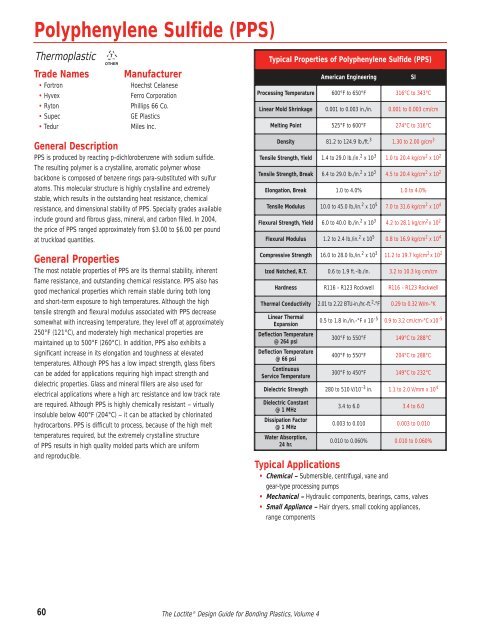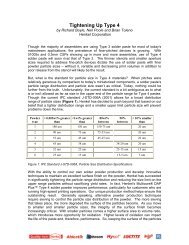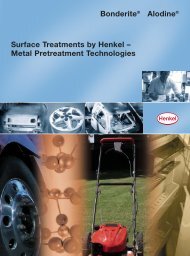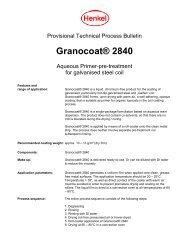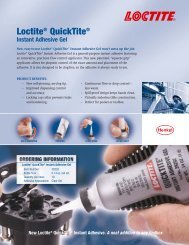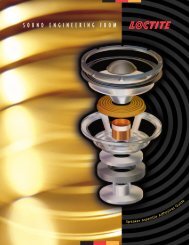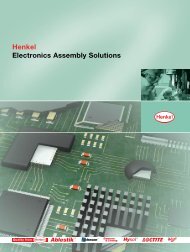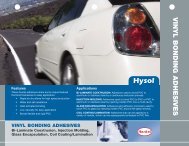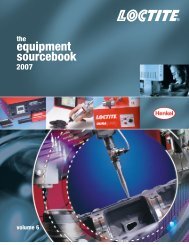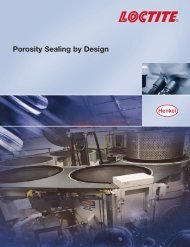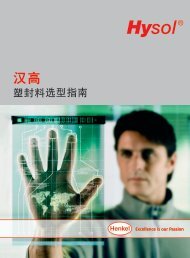Poly<strong>ph</strong>enylene Sulfide (PPS)ThermoplasticTrade Names Manufacturer• FortronHoechst Celanese• HyvexFerro Corporation• RytonPhillips 66 Co.• SupecGE Plastics• TedurMiles Inc.Typical Properties of Poly<strong>ph</strong>enylene Sulfide (PPS)American EngineeringSIProcessing Temperature 600°F to 650°F 316°C to 343°CLinear Mold Shrinkage 0.001 to 0.003 in./in. 0.001 to 0.003 cm/cmMelting Point 525°F to 600°F 274°C to 316°CGeneral DescriptionPPS is produced by reacting p-dichlorobenzene with sodium sulfide.The resulting polymer is a crystalline, aromatic polymer whosebackbone is composed of benzene rings para-substituted with sulfuratoms. This molecular structure is highly crystalline and extremelystable, which results in the outstanding heat resistance, chemicalresistance, and dimensional stability of PPS. Specialty grades availableinclude ground and fibrous glass, mineral, and carbon filled. In 2004,the price of PPS ranged approximately from $3.00 to $6.00 per poundat truckload quantities.General PropertiesThe most notable properties of PPS are its thermal stability, inherentflame resistance, and outstanding chemical resistance. PPS also hasgood mechanical properties which remain stable during both longand short-term exposure to high temperatures. Although the hightensile strength and flexural modulus associated with PPS decreasesomewhat with increasing temperature, they level off at approximately250°F (121°C), and moderately high mechanical properties aremaintained up to 500°F (260°C). In addition, PPS also exhibits asignificant increase in its elongation and toughness at elevatedtemperatures. Although PPS has a low impact strength, glass fiberscan be added for applications requiring high impact strength anddielectric properties. Glass and mineral fillers are also used forelectrical applications where a high arc resistance and low track rateare required. Although PPS is highly chemically resistant – virtuallyinsoluble below 400°F (204°C) – it can be attacked by chlorinatedhydrocarbons. PPS is difficult to process, because of the high melttemperatures required, but the extremely crystalline structureof PPS results in high quality molded parts which are uniformand reproducible.Density 81.2 to 124.9 lb./ft. 3 1.30 to 2.00 g/cm 3Tensile Strength, Yield 1.4 to 29.0 lb./in. 2 x 10 3 1.0 to 20.4 kg/cm 2 x 10 2Tensile Strength, Break 6.4 to 29.0 lb./in. 2 x 10 3 4.5 to 20.4 kg/cm 2 x 10 2Elongation, Break 1.0 to 4.0% 1.0 to 4.0%Tensile Modulus 10.0 to 45.0 lb./in. 2 x 10 5 7.0 to 31.6 kg/cm 2 x 10 4Flexural Strength, Yield 6.0 to 40.0 lb./in. 2 x 10 3 4.2 to 28.1 kg/cm 2 x 10 2Flexural Modulus 1.2 to 2.4 lb./in. 2 x 10 5 0.8 to 16.9 kg/cm 2 x 10 4Compressive Strength 16.0 to 28.0 lb./in. 2 x 10 3 11.2 to 19.7 kg/cm 2 x 10 2Izod Notched, R.T. 0.6 to 1.9 ft.-lb./in. 3.2 to 10.3 kg cm/cmHardness R116 - R123 Rockwell R116 - R123 RockwellThermal Conductivity 2.01 to 2.22 BTU-in./hr.-ft. 2 -°F 0.29 to 0.32 W/m-°KLinear ThermalExpansionDeflection Temperature@ 264 psiDeflection Temperature@ 66 psiContinuousService Temperature0.5 to 1.8 in./in.-°F x 10 -5 0.9 to 3.2 cm/cm-°C x10 -5300°F to 550°F 149°C to 288°C400°F to 550°F 204°C to 288°C300°F to 450°F 149°C to 232°CDielectric Strength 280 to 510 V/10 -3 in. 1.1 to 2.0 V/mm x 10 4Dielectric Constant@ 1 MHzDissipation Factor@ 1 MHzWater Absorption,24 hr.3.4 to 6.0 3.4 to 6.00.003 to 0.010 0.003 to 0.0100.010 to 0.060% 0.010 to 0.060%Typical Applications• Chemical – Submersible, centrifugal, vane andgear-type processing pumps• Mechanical – Hydraulic components, bearings, cams, valves• Small Appliance – Hair dryers, small cooking appliances,range components60The <strong>Loctite</strong> ® Design Guide for Bonding Plastics, <strong>Volume</strong> 4
ADHESIVE SHEAR STRENGTH(psi)(MPa)Poly<strong>ph</strong>enylene SulfideSUPEC GRADE W33130% Glass Reinforced,PTFE Filled, 9 rmsGRADE W331ROUGHENED24 rmsGRADE G301T30% Glass ReinforcedGRADE G40165% Glass ReinforcedGRADE G32365% Glass/MineralReinforcedGRADE CTX53030% Glass ReinforcedPPS/PEI Blend<strong>Loctite</strong> ® 380 Black Max ® Instant Adhesive,Rubber Toughened1000.71501.02001.42001.42501.71501.0Supec W331 PPS ( 1 ⁄8" Thick) produced by GE Polymerland 12 rms Supec courtesy of GE Plastics<strong>Loctite</strong> ® 401 Prism ® Instant Adhesive,Surface InsensitiveMEDICAL: <strong>Loctite</strong> ® 4011 Prism ®Instant Adhesive, Surface Insensitive<strong>Loctite</strong> ® 401 Prism ®<strong>Loctite</strong> ® 770 Prism ® PrimerMEDICAL: <strong>Loctite</strong> ® 4011 Prism ® /<strong>Loctite</strong> ® 7701 Prism ® Primer<strong>Loctite</strong> ® 414 Super Bonder ®Instant Adhesive, General Purpose<strong>Loctite</strong> ® 330 Depend ® Adhesive,Two-Part No-Mix Acrylic<strong>Loctite</strong> ® 3105 Light Cure Adhesive,MEDICAL: <strong>Loctite</strong> ® 3311 Light Cure Adhesive<strong>Loctite</strong> ® 3340 Light Cure Adhesive,UV Cationic Epoxy<strong>Loctite</strong> ® 4305 Flashcure ® Light Cure AdhesiveFLUORESCENT: <strong>Loctite</strong> ® 4307 Flashcure ®Light Cure Adhesive<strong>Loctite</strong> ® H3000 Speedbonder Structural Adhesive, General Purpose<strong>Loctite</strong> ® H4500 Speedbonder Structural Adhesive, Metal Bonder<strong>Loctite</strong> ® 3030 Adhesive, Polyolefin Bonder<strong>Loctite</strong> ® E-00CL Hysol ® Epoxy Adhesive,Low Odor<strong>Loctite</strong> ® E-90FL Hysol ® Epoxy Adhesive,Flexible<strong>Loctite</strong> ® E-30CL Hysol ® Epoxy Adhesive,Glass BonderMEDICAL: <strong>Loctite</strong> ® M-31CL Hysol ®Epoxy Adhesive, Glass Bonder<strong>Loctite</strong> ® E-20HP Hysol ® Epoxy Adhesive,Fast SettingMEDICAL: <strong>Loctite</strong> ® M-21HP Hysol ®Epoxy Adhesive, Fast Setting<strong>Loctite</strong> ® E-214HP Hysol ® Epoxy Adhesive,High Strength<strong>Loctite</strong> ® Fixmaster ® High Performance Epoxy<strong>Loctite</strong> ® 1942 Hysol ® Hot Melt Adhesive,EVA Based<strong>Loctite</strong> ® 3651 Hysol ® Hot Melt Adhesive,Polyolefin<strong>Loctite</strong> ® 7804 Hysol ® Hot Melt Adhesive1501.04002.82501.71501.05503.81000.78005.53002.12001.46004.11501.04503.18005.56004.110507.24503.11000.71000.7500.35003.54002.84002.83502.45503.84002.81501.03502.42501.712008.33002.13002.13002.14503.111007.64002.89006.26004.13002.1205014.12501.74002.84002.82001.49006.2Adhesive Performance<strong>Loctite</strong> ® 4305 Flashcure ® Light Cure Adhesive and <strong>Loctite</strong> ® E-30CL and E-214HP Hysol ® EpoxyAdhesives achieved the highest bond strength on the standard grade of PPS tested for all adhesives. Ingeneral, all the adhesives tested exhibited good adhesion to PPS. The exceptions are <strong>Loctite</strong> ® 380 BlackMax ® Instant Adhesive, <strong>Loctite</strong> ® 3340 Light Cure Adhesive, the three hot melt adhesivesand <strong>Loctite</strong> ® 5900 Flange Sealant.Surface TreatmentsSurface roughening caused a statistically significant increase in the bond strengths achieved by all theadhesives evaluated, with the exception of <strong>Loctite</strong> ® 3105 Light Cure Adhesive and <strong>Loctite</strong> ® 401 Prism ®Instant Adhesive, both of which experienced no statistically significant change. The use of <strong>Loctite</strong> ® 770 Prism ® Primer, in conjunction with <strong>Loctite</strong> ® 401 Prism ® Instant Adhesive, or <strong>Loctite</strong> ® 4011 Prism ® MedicalDevice Instant Adhesive with <strong>Loctite</strong> ® 7701 Prism ® Primer, did not produce any statistically significantchange in the bondability of PPS.Other Important Information• PPS is compatible with all <strong>Loctite</strong> ® brand adhesives, sealants, primers, activators, and accelerators.• Surface cleaners: isopropyl alcohol, <strong>Loctite</strong> ® ODC-Free Cleaner & Degreaser.<strong>Loctite</strong> ® 3631 Hysol ® Hot Melt Adhesive,Urethane7004.8<strong>Loctite</strong> ® U-05FL Hysol ® Urethane Adhesive,High Strength<strong>Loctite</strong> ® Fixmaster ® Rapid Rubber RepairOEM: <strong>Loctite</strong> ® U-04FL Hysol ®Urethane Adhesive, Fast Setting<strong>Loctite</strong> ® 5900 ® Flange Sealant,Heavy Body RTV Silicone6504.54002.81000.7NOTES:The addition of the indicated additive (or surface roughening) caused a statistically significant increasein the bond strength within 95% confidence limits.The <strong>Loctite</strong> ® Design Guide for Bonding Plastics, <strong>Volume</strong> 4 61


